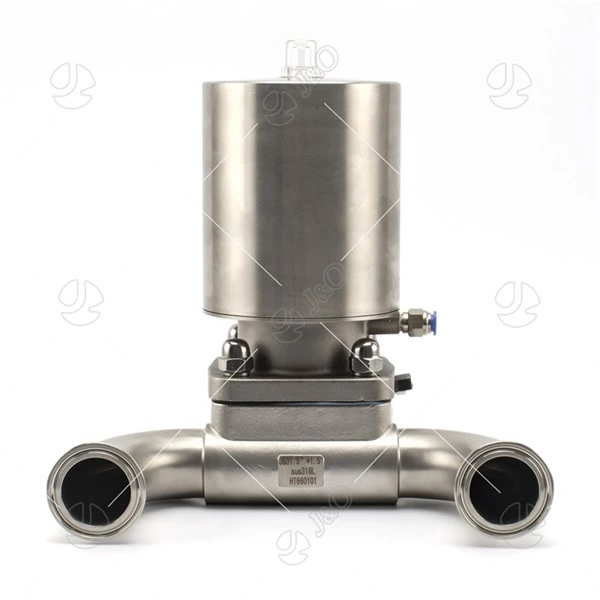How To Ensure The Quality Of Normally Closed Pneumatic Diaphragm Valves?
The structure of Sanitary Diaphragm Valve is very different from that of general valves. It is a new type of valve and a special form of shut-off valve. The opening and closing parts of pneumatic diaphragm valves are a diaphragm made of soft materials, which separates the inner cavity of the valve body from the inner cavity of the valve cover and the driving components. It is now widely used in various fields. Commonly used diaphragm valves include rubber-lined diaphragm valves, fluorine-lined diaphragm valves, unlined diaphragm valves, and plastic diaphragm valves. The diaphragm valve uses a corrosion-resistant lined valve body and a corrosion-resistant diaphragm to replace the valve core assembly, and uses the movement of the diaphragm to adjust. The valve body material of the diaphragm valve is cast iron, cast steel, or cast stainless steel, and is lined with various corrosion-resistant or wear-resistant materials, diaphragm materials rubber and polytetrafluoroethylene. The lined diaphragm has strong corrosion resistance and is suitable for the regulation of strong corrosive media such as strong acids and strong alkalis.
The use of normally closed pneumatic diaphragm valves does provide convenience for the packing itself, but in the subsequent maintenance stage, what aspects should be paid attention to ensure that the use of diaphragm valves is of higher quality and brings effective guarantees for the improvement of the safety factor of operation.
Note 1: Is there any damage to the sealing surface?
From the current specific situation, the sealing surface needs to be thoroughly understood in detail to ensure the upgrade of the quality of installation and use. From the current specific situation, considering these details to summarize can not only improve the service life of the product itself, but also further summarize the effect and quality, which is a reason worthy of recognition.
Note 2: Is there any wear on the thread?
During the long-term use of the normally closed pneumatic diaphragm valve, it is inevitable that the thread will wear. The best practice is to check regularly. If a similar situation occurs, it can be replaced in time to ensure that the daily operation of the packing is carried out as scheduled. Observe whether there are signs of looseness. If there are, it should be consolidated in time to ensure safe and stable operation.
